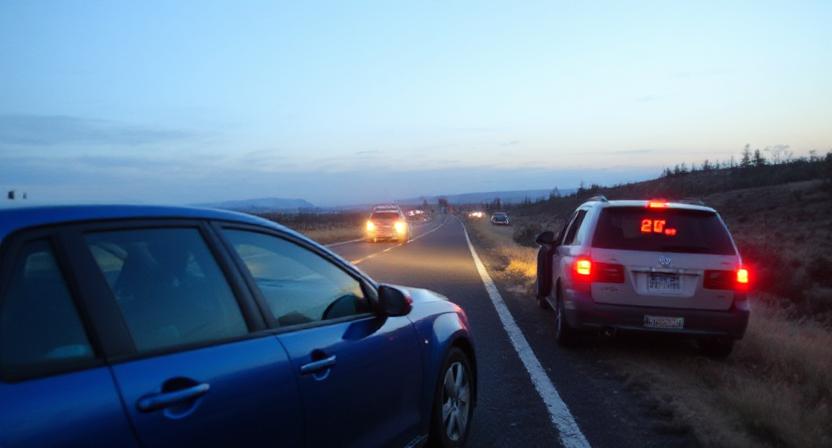Summer 2018 we were sitting in the car, driving from Bergheim, France, to Genoa, Italy, cruising along the Swiss motorway. So far, the journey had gone smoothly no delays, no long lines. We had left Bergheim early, confident we’d reach Genoa ahead of schedule and enjoy a leisurely evening exploring the city. But those hopes were soon shattered. Suddenly, everything took an unexpected turn…
Just as we were driving along in the outer lane of the motorway, we suddenly heard a strange noise coming from the car, which seemed to be jumping and dancing. Our first thought was that the road must be in extremely poor condition due to roadworks. After a few seconds, we realized that there must be something else, something worse wrong. Our right rear tire wasn’t just flat, no it had exploded. Fuck!!! And not only had the car’s tire exploded, we were in the middle of a busy road with practically no emergency lane. What do you do then?
What we did when disaster struck
Our accident happened in the most inconvenient place on the entire route between Bergheim and Genoa – and I must admit that my first thought was: FUCK! What now! Fortunately, my brain quickly switched to survival mode and I made quick and sensible decisions. I turned on the hazard lights and steered the car into the hard shoulder. Due to roadworks, there was no emergency lane on the right, only a narrow emergency lane on the hard shoulder.
The hard shoulder was much narrower than usual on this stretch of road due to the roadworks. And now that the car was in the hard shoulder, this meant that the hard shoulder was even narrower for the cars still speeding past on the motorway. In addition, the narrow emergency lane meant that it was not safe for us to get out of the car. If we got out, we would be standing in the middle of the motorway with cars speeding past us on both sides. So it was safer for us to stay in the car, even though the cars were speeding past at a distance of about half a meter.
We therefore decided that Lise and Sebastian should stay in the car while I got out with the warning triangle. Lise made sure that Sebastian got as far away from the cars as possible by moving all the luggage so that he could fit on the left-hand side (away from the cars that were speeding past). I then got out and set up our warning triangle, but it was anything but pleasant. It felt like walking in the passing lane on a busy highway. Cars were whizzing past me on both sides, and we could see that several of the cars in our lane were about to crash because they were squeezed between us and the trucks. Very unpleasant.
Due to the narrow emergency lane, it was far too dangerous to change the tire ourselves. We therefore called Falck to come out and help us. Fortunately, Falck and the Swiss roadside assistance service were extremely efficient. Falck estimated that the Swiss roadside assistance would arrive in about 20 minutes. Twenty-one minutes later, roadside assistance pulled up in front of our car! How often do you experience that kind of punctuality?
However, the roadside assistance technician did not get out of his car, and after a while we began to wonder what was going on. After 10 minutes, he got out and explained that he first had to call the police. The police were necessary, and we found out why five minutes later. The tow truck driver had walked past our car and continued down toward the triangle behind us and further down the highway. There, he stood in the middle of the outer lane and began directing cars into the inner lane. The intention was to keep the cars at a safe distance from our car so that they would not crash and we would not be injured inside the car. It was very heroic as the cars came speeding by. We can only express our great respect for his efforts. Fortunately, it wasn’t long before the police arrived and closed the road while the mechanic changed our (spare) tire.
Just 90 minutes after contacting Falck, we were already back on the road.
Our experience reminded me of the importance of keeping your car in good condition before traveling – and, not least, having roadside assistance. Of course, we had made sure to bring a spare tire and the necessary equipment in case of an accident. We had also made sure that we had roadside assistance that covered the whole of Europe. We are very grateful for both of these things today.
What to do if you have an accident
Below, I have outlined the most important rules to remember if you have an accident:
- The most important thing you can do if you have an accident is to stay calm.
- Turn on your hazard lights.
- Move your car off the road and into the hard shoulder or emergency lane.
- Make sure that everyone in the car gets out on the other side of the guardrail so that they are safe. In many countries, it is not permitted to remain in the car.
- Call for roadside assistance, such as Falck.
- Put on a reflective vest and place the warning triangle 100 meters behind the car.
- Walk back to safety.
It is important to tell the roadside assistance where you are so that they can find you as quickly as possible. However, it is not always easy to know exactly where you are, geographically speaking, when you are driving on a motorway in the mountains. In fact, we ourselves were very unsure of where we had broken down in Switzerland. The roadside assistance found us by explaining that we were right in front of a helicopter hangar and could name a town we could see nearby. We found the town on Google Maps on our mobile phones.
Afterwards, we found out that Falck has an excellent app that sends a message to Falck with your exact location based on GPS coordinates. The app also shows what kind of car you have, your Falck number, etc. If we had had this app, it would have made our situation a lot easier. We have therefore installed Falck’s app ourselves and recommend that anyone going on a road trip also install it or another roadside assistance app! The app makes everything much easier if you happen to have an accident.
Do you have your equipment and roadside assistance sorted?
It’s very easy to overlook the importance of checking your car before you go on vacation. If the car is running fine and there are no immediate problems, it’s easy to fall into the trap of thinking that everything will be fine. But! There’s a big difference between driving a few kilometers a day and driving several thousand kilometers on vacation.
So before your next long road trip, remember to check that:
- there is enough oil in the car
- the brakes are in tip-top condition – it would be terrible to go on vacation with brakes that fail.
- are the tires too worn?
- do you have a spare tire?
- there is enough coolant in the car
- there is enough washer fluid in the car – it’s not a disaster if you don’t have any, but it’s just really annoying if you don’t have any.
Make sure you have a roadside assistance agreement with, for example, Falck or Dansk Autohjælp, and make sure you have an agreement that also covers you when you are abroad. It’s also a really good idea to have your travel insurance in order. Sometimes it’s not enough to just have good roadside assistance; an accident can also involve other people and personal injury, so it’s important to have your travel insurance in order as well.
With good road trip preparation comes good road trip adventures.
Have a good trip!

